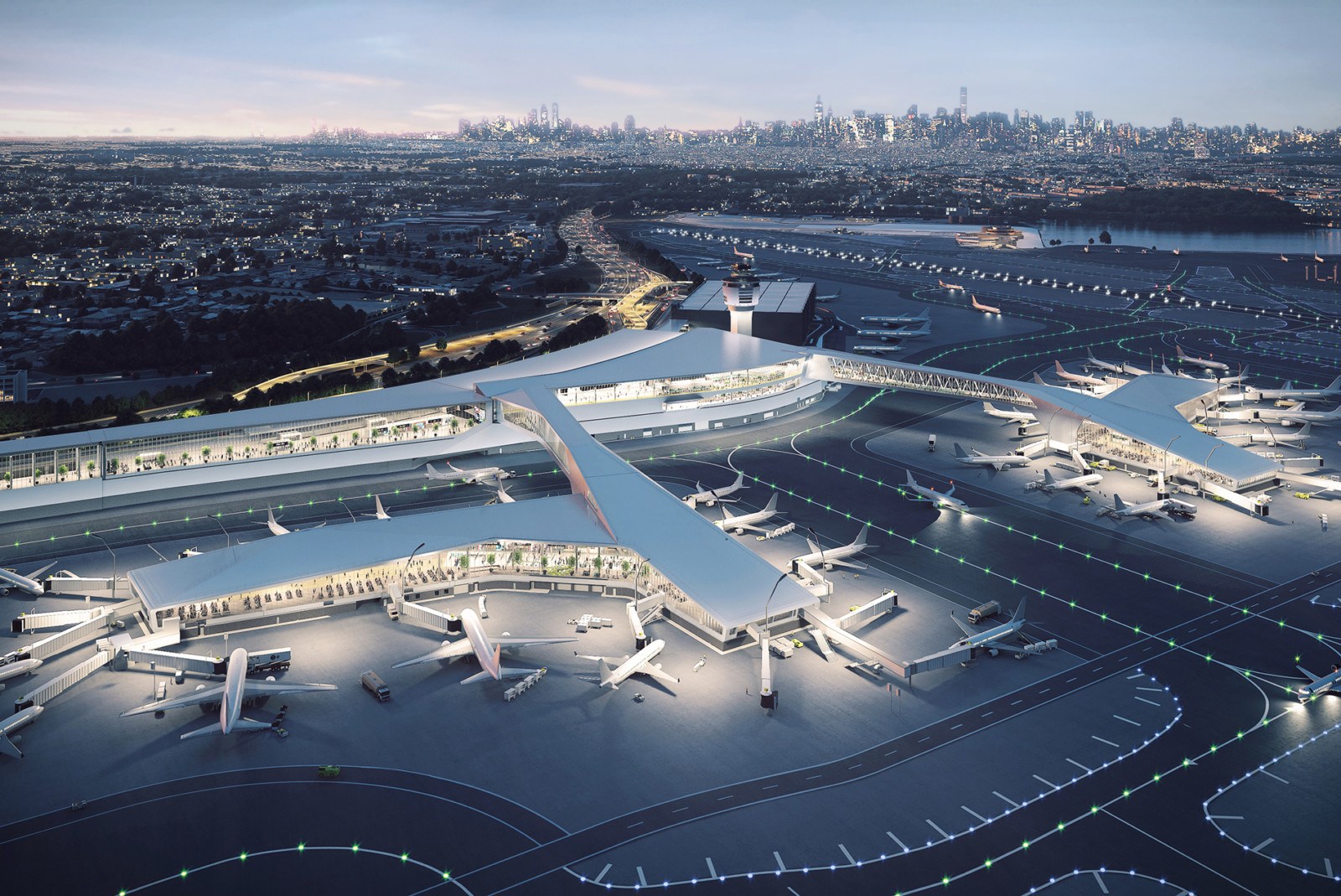The air cargo facility launched at Tirupati airport in 2021 amid many expectations has failed to get momentum and is set to be closed soon. The facility had become a reality in August 2021 and it was expected to be a big hit as many items can be sent to required destinations within a few hours.
With the gradual increase of domestic passenger footfall, there was a hope that it could tap the cargo potential as well from the entire Rayalaseema region and Nellore districts which led the Airport Authority of India (AAI) to moot the facility. Accordingly, the old terminal was earmarked for the purpose and necessary arrangements are made.
Tirupati Airport's air cargo services to be suspended soon
Though it was used initially as a combination of passenger and cargo together, if the demand surges, there is a chance of even operating dedicated cargo flights. But, it evoked poor response and as of now on average less than 700 kg per day is moving from the cargo terminal ever since cargo operations have started on August 12, 2021, which is considered inadequate to continue the facility.
According to reliable sources, due to low bookings, it was decided to suspend services from the exclusive cargo terminal. Meanwhile, AAI is making alternate arrangements and seeking permission for very limited cargo from the passenger terminal itself. However, sources said that there may be a relook into reopening the exclusive cargo terminal if the bookings improve.
AAI is making alternate arrangements and seeking permission for very limited cargo from the passenger terminal itself
However, there was a view that lack of publicity is said to be one of the reasons for the poor response. The concept was said to have not gone into various sections in the region and many were not aware of such a facility.
Tirupati Chamber of Commerce president A Manjunath told The Hans India that the traders have found it difficult to go all the way to Renigunta and hand over the consignments. Instead, there should be one or two pickup points in the city itself which can facilitate even people to book their parcels easily.
Further, the poor road connectivity between Airport and Sri City was another hurdle in this regard. When RTC cargo services are now being provided at the doorstep, people naturally prefer them. Air cargo services should also be accessed easily, he felt.
Read next
Textron takes over Pipistrel to gain foothold in the electric aircraft market
Radhika Bansal
21 Mar 2022

U.S. industrial conglomerate Textron has signed a deal to acquire Pipistrel, the Slovenian ultralight aircraft maker and pioneer in electrically powered aviation, both companies announced on Thursday, March 17.
The Slovenian plane maker tweeted that the partnership will combine the expertise of both companies and “accelerate Pipistrel’s development and certification of sustainable aircraft.”
Textron is home to Cessna, Beechcraft, and Bell aviation brands. The value of the deal has not been disclosed. The transaction is expected to close during the second quarter of this year once all regulatory approvals are issued, Textron said.
Textron takes over Pipistrel to gain a foothold in the electric aircraft market
Pipistrel CEO Ivo Boscarol will remain a minority owner, both companies said.
Pipistrel said the deal would grant it access to greater resources, technical and regulatory expertise and a global aircraft sales and support network that would speed up development and certification of electric and hybrid-electric aircraft.
Kansas-based Textron has committed to maintaining Pipistrel’s brand, headquarters, research and development, and manufacturing in Slovenia and Italy while making additional investments in Pipistrel for the development and production of future products, the Slovenian plane maker said.
According to Slovenia’s STA news agency Boscarol said that under his leadership, the plane maker has positioned itself to offer “affordable, environmentally friendly and electric aviation.”
Textron is home to Cessna, Beechcraft, and Bell aviation brands.
Textron Chairman And CEO Scott Donelly said Pipistrel puts his company in a position to develop new aircraft “to meet a wide range of customer missions.” “Today’s announcement supports Textron’s long-term strategy to offer a family of sustainable aircraft for urban air mobility, general aviation, cargo and special mission roles.”
Along the same lines, the deal could also lead to significant changes to Textron’s Bell Helicopter portfolio. Hybridization has less traction in the urban air mobility market at the moment than with fixed-wing aircraft. However, hybridization is even more compelling in the eVTOL segment given the power requirements and challenges some competitors have had with hitting range targets.
Pipistrel, which currently employs some 300 people, posted a net profit of 4.5 million euros in 2020. It started production in the 1980s. Initially, Pipistrel made only powered hang gliders designed by Boscarol and a group of his friends.
The value of the deal has not been disclosed.
In February 2021, Pipistrel had announced it was working on a 20-seat zero-emission regional aircraft. It is expected to be available between 2028 and 2030. The Miniliner concept unveiled at the time could fly on hydrogen, but Pipistrel was also considering other propulsion solutions at the time.
In the mid-1990s, when composite materials became more widely used in aviation, the company moved to the production of ultra-light aircraft. One of the early models, the Sinus, was the first serially-built ultralight aircraft made out of composites.
The Slovenian company delivered the 1,000th plane of the Virus and Sinus light aircraft family in March 2019. In 2007, the company released an electric version of the Taurus, the world’s first fully-electric 2-seat aircraft and the first electric motor-glider to achieve serial production.
Read next
A Qatar Airways Delhi-Doha passenger plane with over 100 passengers was diverted to Karachi on Monday, March 21 after it declared an emergency due to an indication of smoke in the cargo hold, the airline said.
The aircraft landed safely in Karachi where it was met by emergency services, and passengers disembarked it in an orderly manner using stairs, it said in a statement.
The incident is currently under investigation and a relief flight is being arranged to transport passengers onwards to Doha, the airline said.
Passengers waiting at the Karachi Airport were not given food, water and Wi-Fi
The flight took off from Delhi at 3:50 AM on Monday and landed at Karachi at 5:30 AM. It was supposed to land in Doha at 7:15 AM.
"We apologise for the inconvenience to our passengers who will be assisted with their onward travel plans," it said. Qatar Airways said its flight "QR579 from Delhi to Doha on 21 March diverted to Karachi having declared an emergency due to the indication of smoke detected in the cargo hold".
Qatar Airways operates the Airbus A350-900 (twin-jet) on its Qatar Airways 579 flight.
Qatar Airways operates the Airbus A350-900 (twin-jet) on its Qatar Airways 579 flight.
Airbus India Head Remi Maillard said "will defend the reputation of Airbus and our A350 fleet against all claims by Qatar Airways in court and also will look into all details on the technical reasons for the flight landing.
Airbus has asked a London court to grant it more than USD 220 million as part of its protracted legal dispute with customer Qatar Airways.
Read next
Air India has banned local agents from booking tickets for the Canadian sector. After a ban of two years, now there has been an exemption in international travel, due to which the demand has increased. Local agents are making huge profits on this.
Air India has taken this step to stop this. A section of the travel industry believes that the airline’s strong action reflects the value of its new owner, the Tata Group.
Air India had received information that some local agents were not following proper rules in the sale of tickets. Because of this, the company banned them from booking their tickets.
Air India restricts local agents from booking tickets to Canada
A source said that there was a big misunderstanding between these agents. They were blocking seats at a fixed price and selling them at four times that. This is the reason why he has been banned because it was causing a huge loss to the airline.
Now passengers travelling in the Canada sector can book tickets directly on the airline’s website. An industry source said that a discrepancy was found in the way some agents were booking tickets and hence this action was taken.
Passengers can now book tickets through call centres and the airline’s website. In this regard, an Air India spokesperson said that it is awaiting a response from the concerned department in this regard.
Only Air India and Air Canada operate on India-Canada direct route.
The government has announced the resumption of regular international flights from March 27. But the ban on agents may affect Air India’s booking of tickets to Canada during the peak summer vacation season.
A large number of Indians live in Canada. Due to this, there is expected to be a huge demand in this sector this year. Only Air India and Air Canada operate on this route.
However, a section of the travel agent community says that punishing everyone for the mistake of a few is not the solution.
Tata Group gained bids to personal Air India and was handed over the airline in January
Ajay Prakash, president of the Travel Agents Federation of India (TAFI), told ET that foreign agents can sell tickets on the India-Canada route. Agents registered abroad can also do the same. Only travel agents from India are being discriminated against.
The Tata Group gained bids to personal Air India and was handed over the airline in January. While the brand new homeowners haven’t introduced any main change within the administration of the airline, the group’s plan to herald former Turkish Airlines chairman Ilker Ayci as its CEO & MD couldn’t undergo after Ayci declined the supply.
ALSO READ - Amid the security row, Ilker Ayci declines Tata Sons’ offer to be the new CEO of Air India
The Tata Group has additionally retained administrators of 4 practical departments – finance, operations, business and HR – however, is working with a plan to enhance service high quality within the first part.
Read next
INR 25,000 crore to be spent on developing new and existing airports in next 5 years
Radhika Bansal
21 Mar 2022

In a bid to meet the increasing demand in the aviation sector, the central government will spend INR 25,000 crore in the next five years to develop new and existing airports across the country, Minister of State in the Ministry of Civil Aviation, VK Singh said in a written reply to a question in the Rajya Sabha on March 14.
As part of the plan, the Airports Authority of India (AAI) will spend INR 25,000 crore in the next five years to construct new terminals, expand and modify existing terminals, expand or strengthen existing runways, aprons, Airport Navigation Services (ANS) infrastructure, control towers and technical blocks.
INR 25,000 crore to be spent on developing new and existing airports in next 5 years
The government is also looking to invest INR 36,000 under public-private partnerships for the development of new greenfield airports across the country. So far 'in-principle' approval has been given to set up 21 greenfield airports across the country.
Out of the aforementioned 21, eight airports at Sindhudurg and Shirdi in Maharashtra, Durgapur in West Bengal, Pakyong in Sikkim, Kannur in Kerala, Orvakal in Andhra Pradesh, Kalaburagi in Karnataka and Kushinagar in Uttar Pradesh have been operationalised, the government said.
As part of its regional connectivity scheme (RCS), Ude Desh ka Aam Nagrik (UDAN), the government has operationalised 403 routes connecting 65 airports, including 8 heliports and 2 water aerodromes.
In 2021, the air passengers grew in India by 73% with 200 million passengers
AAI has further identified 154 airports including 14 water aerodromes and 36 helipads so far to be developed under UDAN for the operation of RCS flights.
As per the traffic forecast by the Airports Authority of India (AAI), the all-India passenger throughput growth for the next three years is projected to be 69% in 2022-23 with 338 million passengers, 20% in 2023-24 with 404 million passengers and 11% in 2024-25 with 449 million air passengers.
In 2021, the air passengers grew in India by 73% with 200 million passengers after several covid restrictions were eased and domestic airlines started to function with 100% pre-Covid capacity.
Read next
IATA announces the first-of-its-kind, industry-developed passenger CO2 calculation methodology
Prashant-prabhakar
29 Mar 2022

The International Air Transport Association (IATA), has announced the launch of the IATA Recommended Practice Per-Passenger CO2 Calculation Methodology - the first-of-its-kind tool to quantify CO2 emissions per passenger for a specific flight.
That being said, there are other C02-offset options available already in the aviation circle, although the measurements are generic at best and do not take into account the various efficiency(s) of different aircraft models, cargo loading, the actual weight or the very recent introduction of sustainable aviation fuels.
TravelDailyNews International
How relevant is the need for an accurate C02 emission calculation method?
As travellers, corporate travel managers, and travel agents are increasingly demanding precise flight CO2 emission information, an accurate and standardized calculation methodology is critical. This is particularly true in the corporate sector where such calculations are needed to underpin voluntary emissions reductions targets. Additionally, there are global climate-change targets that need to be met too.
Representative | Environmental Science Associates
Airlines have worked together through IATA to develop an accurate and transparent methodology using verified airline operational data. This provides the most accurate CO2 calculation for organizations and individuals to make informed choices about flying sustainably. This includes decisions on investing in voluntary carbon offsetting or sustainable aviation fuel (SAF) useWillie Walsh, IATA's Director General
Willie Walsh | Prensa Latina
Here's how IATA's CO2-emission calculations are worked out:
Guidance on fuel measurement, aligned with the Carbon Offsetting and Reduction Scheme for International Aviation (CORSIA)Clearly defined scope to calculate CO2 emissions to airlines’ flying activities Guidance on non-CO2 related emissions and Radiative Forcing Index (RFI)Weight-based calculation principle: allocation of CO2 emission by passenger and belly cargoGuidance on passenger weight, using actual and standard weightEmissions Factor for conversion of jet fuel consumption to CO2, fully aligned with CORSIACabin class weighting and multipliers to reflect different cabin configurations of airlinesGuidance on SAF and carbon offsets as part of the CO2 calculation
Therefore, effectively, this tool allows comparing different flights of different airlines to see which option is the most sustainable, to begin with, rather than just allowing passengers to calculate their CO2 emissions to offset them accurately.
The plethora of carbon calculation methodologies with varying results creates confusion and dents consumer confidence. Aviation is committed to achieving net zero by 2050. By creating an accepted industry standard for calculating aviation’s carbon emissions, we are putting in place essential support to achieve this goal. The IATA Passenger CO2 Calculation Methodology is the most authoritative tool and it is ready for airlines, travel agents, and passengers to adoptadded Walsh
SOURCE(s)
COVER: NASA


Comment